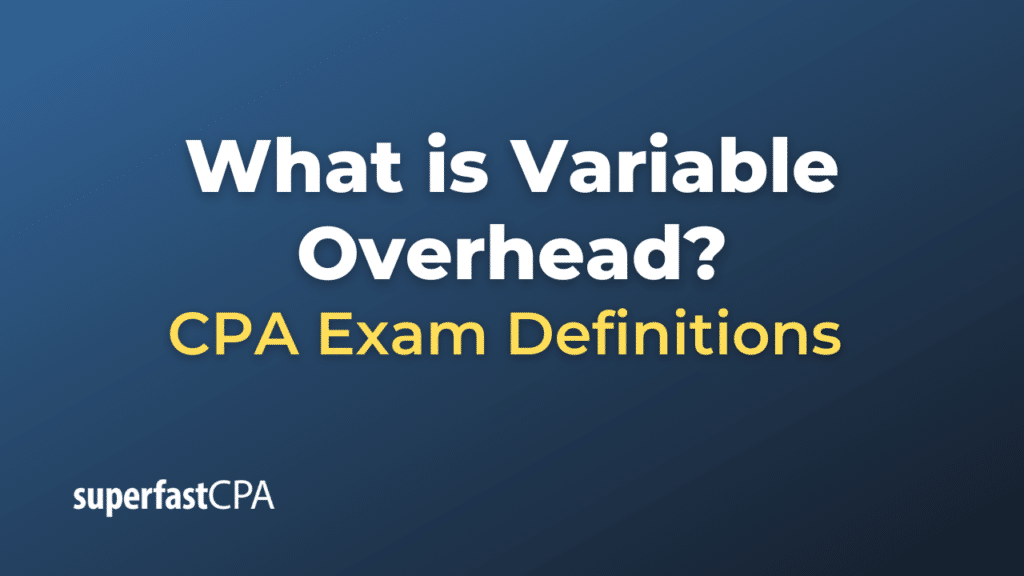Variable Overhead
Variable overhead refers to the operating costs within a business that vary with the level of output or activity. Unlike fixed overhead costs, which remain constant regardless of the level of production or sales (e.g., rent, salaries for permanent staff, insurance), variable overhead costs fluctuate in direct proportion to changes in production levels or volume of operations.
Examples of variable overhead costs might include:
- Direct materials: The raw materials used in the production process.
- Direct labor: The wages of temporary or hourly workers, which can be scaled up or down depending on production needs.
- Utilities: Electric, water, or gas expenses that vary with usage.
- Supplies: Items like cleaning products, manufacturing supplies, or office supplies that need replenishment based on usage.
- Maintenance and repair: Costs to maintain machinery and equipment, which may increase with higher levels of production.
In managerial accounting, understanding the variable overhead costs is essential for effective cost control, budgeting, and pricing strategies. Accurately calculating and analyzing variable overhead can help a company set more realistic performance budgets and make informed decisions about scaling operations up or down.
Variable Overhead Rate
The variable overhead rate is calculated by dividing the total variable overhead costs by the total activity base (often measured in machine hours, labor hours, or units produced). This rate can be applied to future production to estimate the variable overhead costs for a specific level of activity.
Example of Variable Overhead
Let’s consider a small business that manufactures custom wooden furniture. The variable overhead costs for this business could include costs like electricity for running machinery, hourly wages for temporary workers, and costs of supplies like sandpaper and screws.
Scenario:
- Total number of furniture units planned for production this month: 100 units
- Variable overhead costs estimated for the month:
- Electricity: $500
- Hourly wages for temporary workers: $1,500
- Supplies (sandpaper, screws, etc.): $1,000
Step 1: Calculate Total Variable Overhead Costs
The total estimated variable overhead costs for the month would be:
$500 (Electricity) + $1,500 (Hourly wages) + $1,000 (Supplies) = $3,000
Step 2: Calculate Variable Overhead Rate per Unit
To calculate the variable overhead rate per unit of furniture, we’d divide the total variable overhead costs by the number of units planned for production:
Variable Overhead Rate per Unit = Total Variable Overhead Costs / Total Units
= $3,000 / 100 units = $30/unit
This means that it costs approximately $30 in variable overhead to produce one unit of custom wooden furniture.
Step 3: Estimating Future Costs
If the business plans to manufacture 120 units next month, the estimated variable overhead costs can be calculated as follows:
Estimated Variable Overhead for Next Month= 120 units × $30/unit = $3,600
Summary
In this example, the business expects to incur $3,000 in variable overhead costs to produce 100 units this month, with a variable overhead rate of $30 per unit. If production scales up to 120 units the next month, they can anticipate that their variable overhead costs will increase to $3,600, allowing them to plan and budget accordingly.













